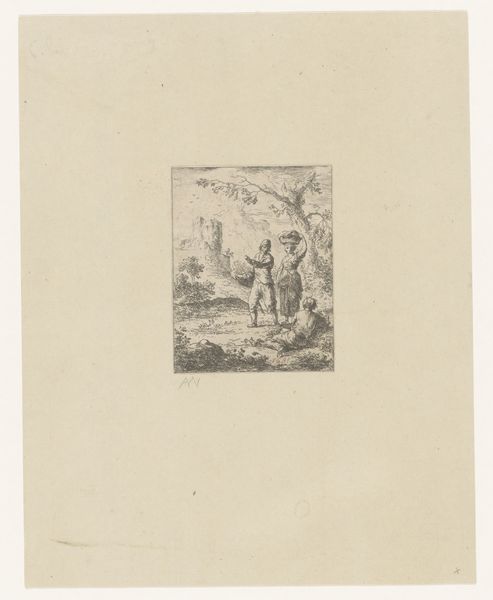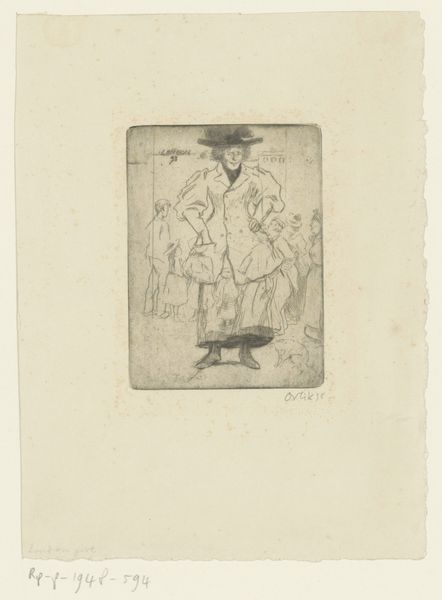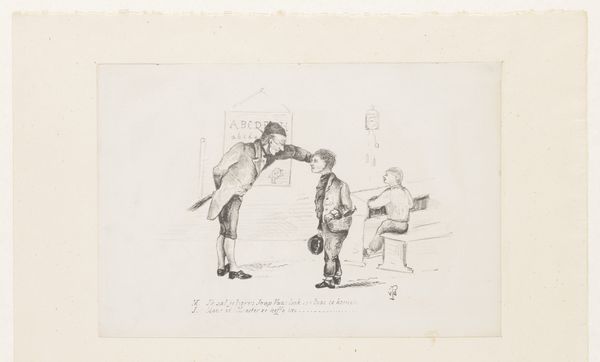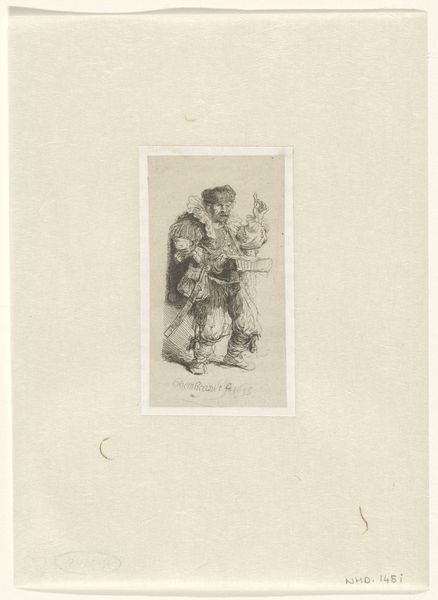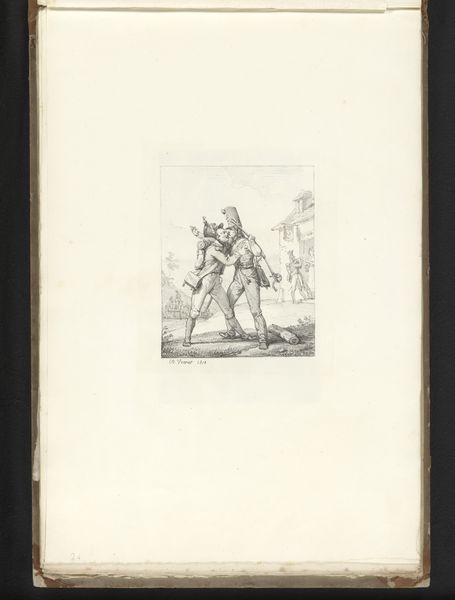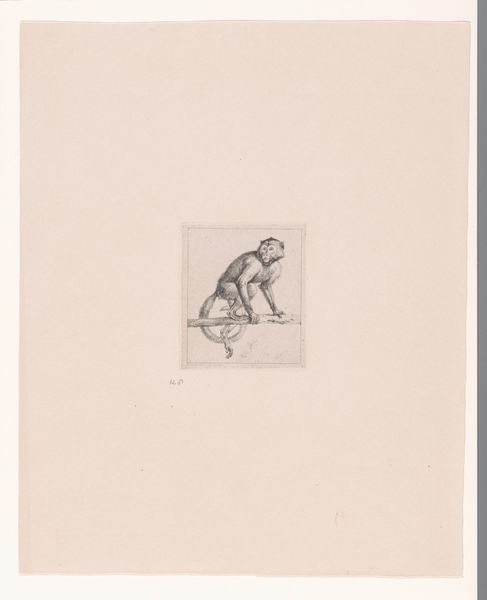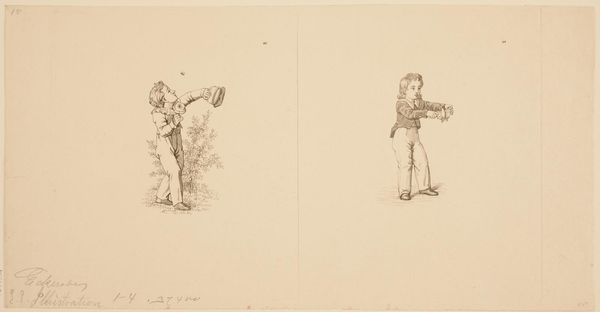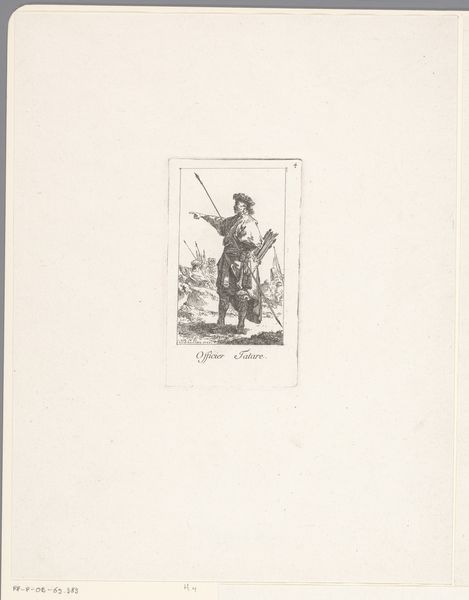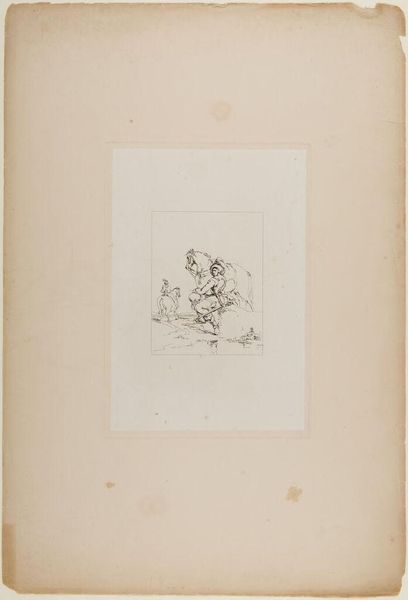
drawing, print, ink, engraving
#
portrait
#
drawing
# print
#
figuration
#
ink
#
genre-painting
#
engraving
Dimensions: height 148 mm, width 98 mm
Copyright: Rijks Museum: Open Domain
Curator: Here we have “Mokkende schooljongen,” or "Grumpy schoolboy," a drawing made somewhere between 1724 and 1814, and attributed to an anonymous artist. It employs ink and engraving, primarily. Editor: My initial impression is one of contrast. Two adjacent framed images. On the left, dejection. On the right, unbounded glee. The visual juxtaposition certainly grabs attention. Curator: The material reality, then, is two states of being rendered through printmaking. I'm curious about the dissemination. Were these images part of a larger publication? Were they sold individually? Understanding how these images were consumed provides a fascinating glimpse into 18th-century Dutch society. Editor: Absolutely. Focusing on the left image, I see a boy burdened by expectation, slumped with what I imagine is academic or societal pressure. The book tucked under his arm… does it represent knowledge as a burden? Perhaps the hat casts a shadow on his potential. The composition directs our eyes downward, emphasizing the weight on him. Curator: And look closely at the details of the engraving itself! Consider the labor involved in creating the matrix from which these images were printed. How many prints were made? How accessible was this type of imagery to the average person? These considerations provide insight into the conditions of artistic production during this period. Editor: Transitioning to the boy on the right, observe the shift in symbolic weight. Here, the child actively swings his switch in triumph! The use of the stick brings about pagan undertones with the idea of phallic worshipping which has changed, now he is brandishing his stick. Light and joy! The difference is dramatic. What narrative are the paired images telling us? Are we looking at his transformation or simply both sides of youth's temperament? Curator: That interpretation leads us to a broader inquiry about the use of materials. Paper wasn’t cheap, nor was the engraving process. Whose story were they trying to portray using these images? Editor: Indeed, it forces us to examine the deeper psychological weight. So, the composition works by reflecting common struggles between freedom and control or possibly learning when to act a certain way when appropriate. Curator: And what was it like working as a craftsman doing engravings? Such skilled hands needed for the print medium! The value placed on artisan work informs us how it's placed amongst society then versus now. A lot to be revealed from ink on paper! Editor: It certainly makes us ponder the cyclical nature of these anxieties, now seen in contrast; how deeply ingrained they were then, how clearly articulated here and how clearly they carry across generations today.
Comments
No comments
Be the first to comment and join the conversation on the ultimate creative platform.




